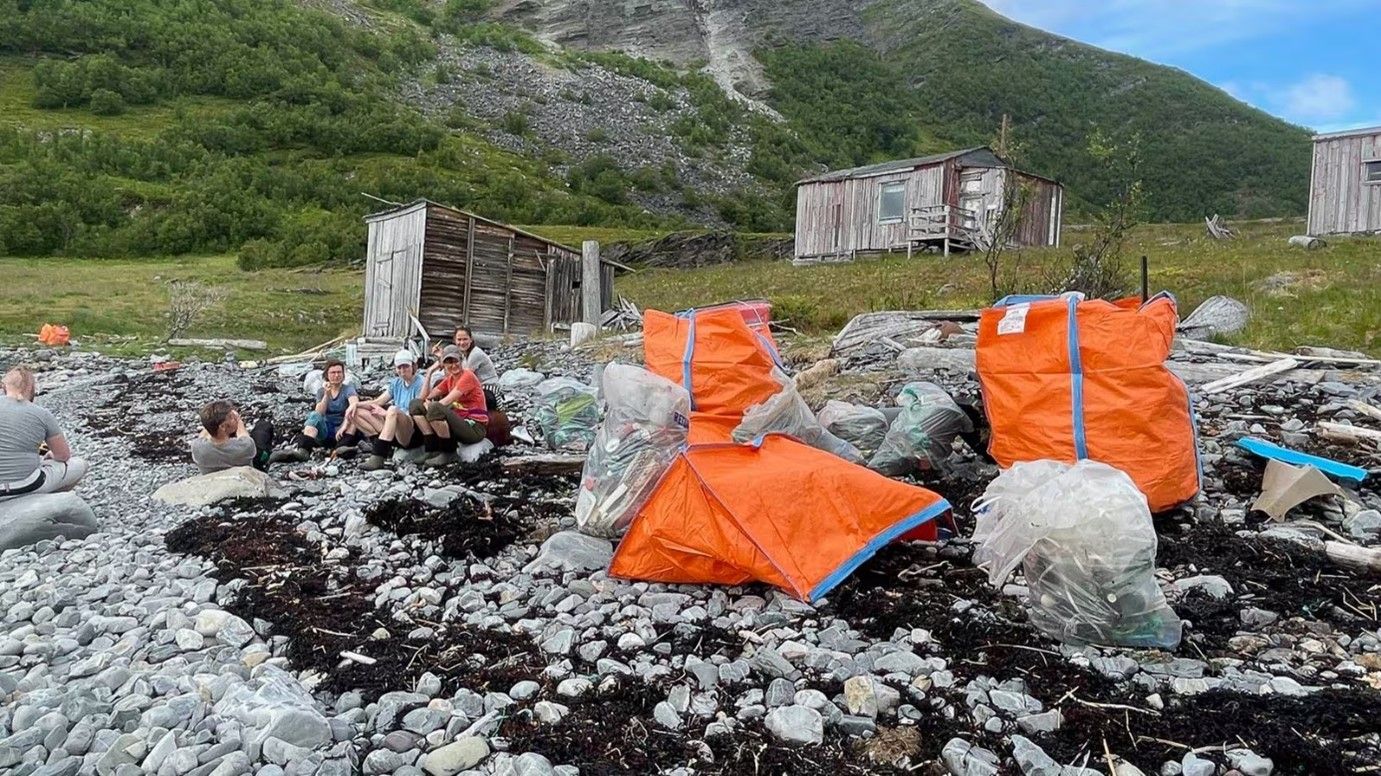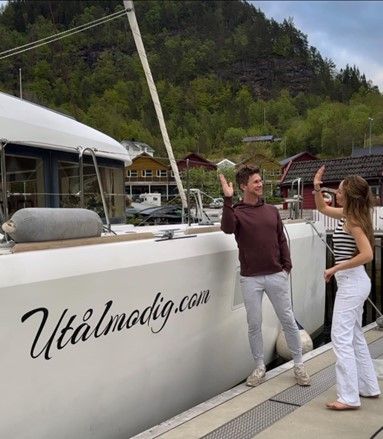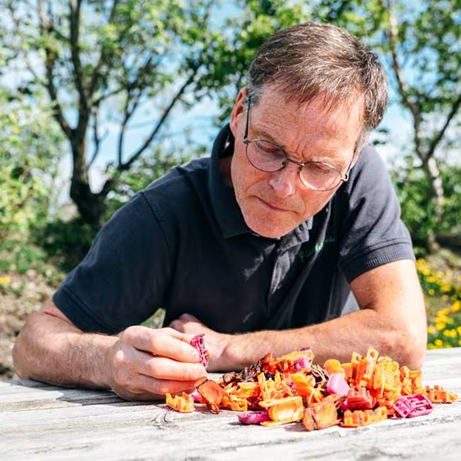Blog Layout
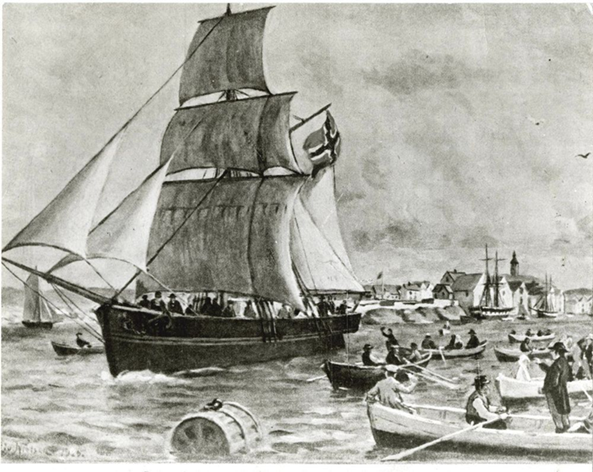
By Lasse Syversen
•
February 1, 2025
On the wall in our summerhouse, I have a model of one of my favorite ships, Restauration, a sloop built in 1801 in Hardanger, Norway. Restauration set sail from Stavanger on July 4, 1825, with 52 people aboard, a small religious group who were followers of lay preacher Hans Nielsen Hauge. Known as the Haugeans (“Haugianere”), the group was searching for religious freedom and better economic opportunities. The Restauration holds a special place in Norwegian American history, and this year we celebrate the 200-year anniversary of that first emigration from Norway to the United States of America.
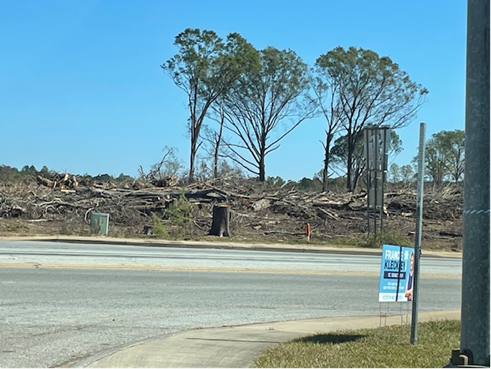
By Lasse Syversen
•
November 1, 2024
Even before the most recent hurricane (Milton) hit Florida, Vigdis and I were planning a long drive visiting six states and both the East Coast and Gulf Coast of Florida. The purpose of this trip was to experience with our own eyes how the recent storms have impacted individual locations and, for me in particular, the effects on the transportation industry. As a Norwegian, we have little experience with hurricanes, and I believe we don’t get the full picture through the news as we will discuss further in this article. That’s why we wanted to do this trip before we returned to Norway for Thanksgiving. We expect many questions from family and friends about the election and all the storms, so we wanted to be better prepared. What’s better than talking to local people and seeing it with your own eyes? Relative to the election, this trip was also to experience the so-called “divided country.” We did not find a divided country, but we did find a lot of love, unity and hope, my theme for this year.
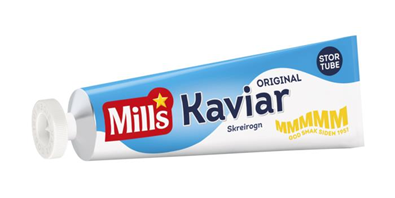
By Lasse Syversen
•
October 1, 2024
One way we know that Fall is coming in Norway is when our dear HM The King goes onboard the Royal Yacht, Kongeskipet MS NORGE, for the last time to inspect the crew and honor them for their service. Called the debarking, it marks the end of the season for this beautiful ship. This year, as in so many before, he was accompanied by HM The Queen and The Crown Prince. The ship was used this year for royal visits to local communities, like their visit to Agder and Rogaland. On June 1st, Crown Prince Haakon and Crown Princess Mette-Marit used the yacht to attend an anniversary celebration at Moster in Vestland marking the 1000-year-jubilee of the first Christian Laws of Norway introduced by King Olaf Haraldsson and Bishop Grimkjell at Mostratinget (a court meeting) in 1024.
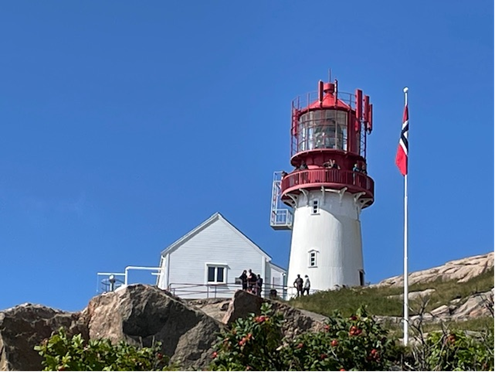
By Lasse Syversen
•
September 1, 2024
This summer I have enjoyed a coolcation in Norway with Vigdis, our granddaughter Elma and our dog, Buddy…and let me just state that we were not alone. I have never seen so many foreign-registered cars, motorcycles, and even bicycles! In addition, many cruise ships travel along the coast and numerous people from other countries in Europe are traveling by train as the railroads offer hiking tickets and interrail tickets for all ages.
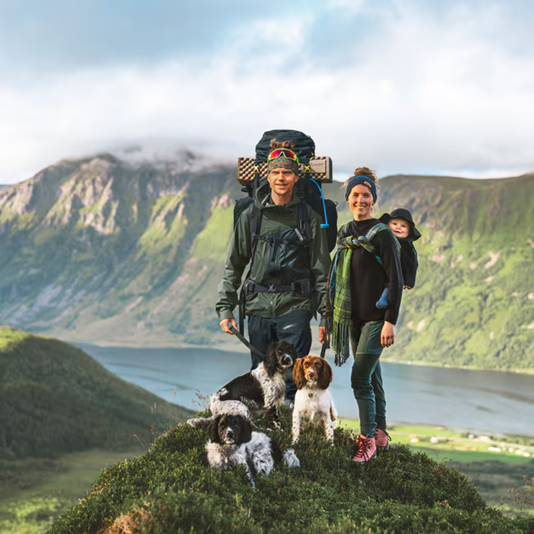
By Lasse Syversen
•
July 1, 2024
Traveling to Norway for the summer in mid-June always connects us with Americans traveling to Norway, at the airport and on board the plane. I use the opportunity to ask where they are going, why they selected Scandinavia and their possible previous experiences. Scandinavian Airlines and Iceland Air benefit from land vacationers and cruise passengers during the summer which compensates for the lack of business travelers not traveling as much as other times of the year.
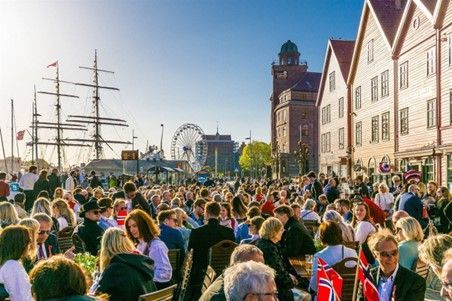
By Lasse Syversen
•
May 1, 2024
I certainly hope to see many of you this year at Carderock Park on May 12th to celebrate the Norwegian Constitution Day. Why do we celebrate May 17th? Norway's Constitution was unanimously adopted by the National Assembly at Eidsvoll on May 16, 1814, and was signed the following day, May 17, 1814. The actual celebration of Constitution Day began in 1836 when the day was instituted as a public holiday. People are dressed up in their absolute best clothes and, if you are lucky enough to have a bunad -- the Norwegian National costume -- May 17th is the day to wear it. The 17th of May is often called Children's Day, as opposed to many other countries celebrating their constitution day with military parades. The first children’s parade was arranged in Oslo in 1870, after an initiative by the famous poet and Nobel Prize winner, Bjørnstjerne Bjørnson. The first parade was for boys only; girls participated starting in 1889. School children and school bands go together in the parade, where the children wave Norwegian flags and shout hurray or sing along when the band plays. Everyone else stands along the parade route and watches and waves to the children. It is a full day celebration, from early morning to late evening.
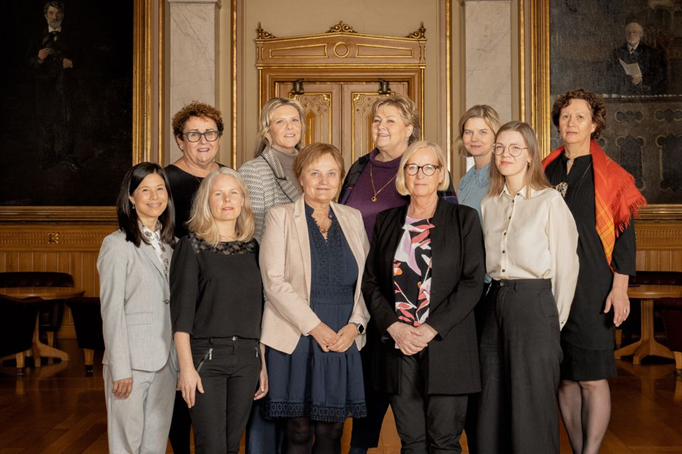
By Lasse Syversen
•
April 1, 2024
Just before Christmas, I was diagnosed with cancer. When you receive a diagnosis of a serious health issue, your priorities change. Having time to think over Christmas and going into the new year, I decided to make Hope my theme for the new year -- hope for my personal life, hope for our community, and hope in the world. Without hope in my life, I would probably not be writing to you today. In this life, there is no escaping heartache. Sorrow is a natural emotion, and the tears that go with sorrow can be healthy. Hope allows us to feel the pain and then work toward healing. It keeps us from staying stuck in sorrow or the pit of despair which is neither healthy nor natural. Sharing with you what I am concerned about gives me hope. If you share your concerns with your friends, it can give you hope as well.

By Lasse Syversen
•
March 1, 2024
My father always said, “when someone loses, someone else wins.” I think this is certainly true when we talk about the conflict in the Red Sea and the Suez Canal where Houthi rebels began firing on U.S. military and commercial vessels after a deadly blast at the Al-Ahli hospital in Gaza on October 17th, a few days after the outbreak of the Israel-Hamas war. The Houthis, who support Palestinians under attack by Israel in Gaza, claim they only target vessels heading for or with ties to Israel, but others have been hit as well.

By Lasse Syversen
•
February 1, 2024
The Nobel Peace Prize was awarded this year to Narges Mohammadi, a 51 year old Iranian journalist and human rights activist known for her work as deputy director of the Defenders of Human Rights Center, an organization that advocates for political prisoners. The Chairman of the Norwegian Nobel Committee presented the medal in the presence of King Harald V of Norway.

By Lasse Syversen
•
December 1, 2023
To care for your neighbors, work with your neighbors and serve your neighbors are values we have all learned from our parents and churches. Having a good relationship with our neighbors gives value to dealing with the rest of the world and helps us face the unknown.
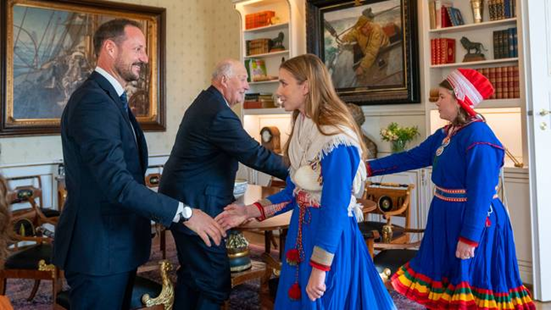
By Lasse Syversen
•
November 1, 2023
In Norway, there is an old Sami tradition of going to the King for help as a last resort when all other possibilities have been tried. In a recent interview, historian Harald Lindbach of the State Archives in Tromsø told the Norwegian Broadcast Corporation (NRK) that this goes back to the 17th and 18th centuries when individuals would make direct contact, often in connection with questions about rights to land.
“Hope is not a passive exercise in wishing, but an active approach to life, arising when there is something we want when we've got a clear goal in mind. And though it may be tough going, we’ll develop a plan to get us closer to where we want to go.”
The crew of dedicated people cleaning along the Laksefjord collected almost 50 tons of garbage.
Photo: RUNE MULADAL
UTÅLMODIG (Impatient) a 39” Catamaran with her crew, Project Manager
Camilla Bache-Mathiesen and Captain André Mundal. Photo: Utålmodig FB
Project Manager for Marine Litter Arve Jåtun and his crew have picked up several of these plastic clips from the building of the Rogfast tunnel.
Photo: Ingvald Nordmark / NRK
This is the lifelong philosophy of Polly Campbell posted on the Psychology Today website on February 5, 2019. Campbell is the host of the Polly Campbell, Simply Said podcast and the author of three books, including How to Live an Awesome Life and Imperfect Spirituality. Campbell believes that “Hopeful people believe they can influence their goals, that their efforts can have a positive impact.” If you have read my articles in the past, you know that is why I keep coming back to my own hope for more initiatives to protect our oceans. Even more important for all Norwegians is protection of the fjords. There are many reasons to be pessimistic about pollution of the oceans, fjords and coastlines, but I keep looking for what can give me hope. This month I would like to recognize and honor several individuals who have taken action to make a difference in this huge problem.
I must thank journalist Knut-Sverre Horn, a writer and photographer for the Norwegian Broadcasting Corporation (NRK) and 2023 winner of the title Wildlife Photographer of the Year in the urban wildlife category of London’s Natural History Museum contest. His May article in The Norwegian Broadcast focuses on work being done in Laksefjord (Salmon fjord) at the top of Norway, in the east of Finnmark, facing north towards the Barents Sea. The mighty Laksefjord is relatively deep, with some islets and skerries (reefs). Especially in the inner part, there is bustling birdlife and important nesting areas. The rich fjord has, of course, attracted people for time immemorial.
In the article, I read that a cleaning team led by Rune Muladal, General Manager of Naturtjenester i Nord AS (an environmental service company) recently started collecting the plastic that Muladal first noticed in the 90s. “We saw that there was a lot of plastic in the fjord, but we didn't think much about it at the time. It was part of the coastline. A lot of plastic on the shore was quite common.” As a biologist, he gained a new perspective on the matter when he found plastic in the stomachs of seabirds, plastic in bottom samples from the sea, and plastic floating in rivers. “It has been an eye-opener in recent years!” Muladal has had a special relationship with the Laksefjord ever since he visited the area for the first time. In 2021, an opportunity opened to do something for the natural pearl. Then money was announced to clean up waste in the sea. “I had decided that the year I turned 50 would be dedicated to Laksefjorden. So, then I celebrated both my 50th birthday and 17 May out in the fjord with my colleagues, local community groups - and the waste.”
“It was calculated that there would be somewhere between 12 and 16 tons of plastic in the entire Laksefjorden,” says Muladal. The result after one summer (3,500 working hours) of clearing? 50 tons of waste! “It is significantly more than expected,” according to Muladal. “I would say that we have taken away up to half of the waste. We have cleaned a quarter of the fjord but have taken the most polluted areas.” The big question: Where does it come from, the huge amounts of plastic that reach our coast? Rune Muladal and his team found some answers last year. Much of what drifts onto the coast comes from the fisheries. “When we have cleaned a beach and filled 14 large sacks, at least 10 of them are fisheries related. Then we have four which are bottles and household waste, industrial and building materials – there’s an incredible number of shoes. We have been wondering about that a lot. Where do all those shoes come from?”
They also found that strong ocean currents had brought one piece more than 5,000 kilometers, or 3,106 miles, proof that garbage from half the globe will end up in this fjord all the way to north Norway. An ink cartridge from HP has a special history. It came from a freighter that sank off the east coast of the USA, south of Nova Scotia, in January 2014. The production number has allowed researchers to follow the cartridge’s journey across the Atlantic Ocean. Who knows, maybe it has spun an extra round in the sea with the equatorial current before it hit the North Atlantic route to Norway, Finnmark and Laksefjorden. It was found there nine years after the sinking, thanks to patriotic people cleaning our beaches. More have opened their eyes. From this year forward, several beaches from Hvaler island in the south to Varanger in the north will be monitored as part of an extensive international collaboration.
Another initiative I would like to honor is the project “UTÅLMODIG” (Impatient) which is also the name of a 39” catamaran sailing along the Norwegian coast from the south all the way to the north for six months in 2024. The initiative takers are two friends of many of us from their time in D.C., Camilla Bache-Mathiesen and her husband André Mundal. I met Camilla for the first time as an intern at the Chamber of Commerce in Washington, D.C. and her husband was a diplomat at the Norwegian Embassy. Many years later, I read that Camilla is actively fighting for our environment and André is actively working for the green movement as he also writes his new book “De flinkeste slutter” (The best quit). Camilla is the founder and leader of the environmental organization Grønnere Sammen (Greener Together) and project manager for the project “Utålmodig.” She is passionate about a more sustainable future and has worked for many years to increase knowledge and activate people to work for the climate and the environment. André is a former consultant, diplomat and officer in the Norwegian Armed Forces. He has specialized in the subject of "change and social development” and is particularly concerned that Norway must stand further in the shoes of the green shift. André has a good portion of impatience for climate and the environment. Andre is also the Captain onboard Utålmodig. (www.utaalmodig.com)
In his New Year’s speech, Norwegian King Harald V asked all of us to be more impassioned about the climate and environment. As an answer to the King’s request, these two entrepreneurs and their organization Greener Together launched an impatient movement to contribute to a faster green transition. They will make stops and meet with people along the coast, give speeches and visit green projects in local communities. We wish them safe sailing and successful meetings with many people and institutions with clear goals.
An underwater tunnel is being built north of Stavanger to south of Haugesund. It is 26.7 kilometers (16.7 miles) long and will be the world's longest undersea tunnel. It will also be the world's deepest, with a road almost 400 meters (0.3 miles) below sea level. Rogfast is the name of this huge project. When the tunnels are blasted, pink plastic clips are used to connect wires to the dynamite. After the explosions, the plastic clips -- together with the blasted rock -- are transported out of the tunnels in a truck. Then everything is dumped on the seabed. It has been over six years since the first bursts of dynamite went off, and now the plastic clips have spread far with the ocean currents. People have reported finding these plastic clips 140 kilometers (87 miles) away from undersea tunnel project, although The Norwegian Road administration is unsure whether all the plastic remains found in Western Norway come from the Rogfast project.
This brings me to my third example of people engaged in environmental action -- Arve Jåtun, Project Manager for marine litter for Jæren Friluftsråd, a local organization for the environment close to Stavanger. Jåtun says they have picked up around 50 of these plastic clips along the Jærkysten and the fjords in Ryfylke. “The negative is that this is plastic material. It is not sustainable to have plastic in nature,” he says. The Road Administration has introduced cleaning actions which are conducted once a month in the winter and twice a month in the summer. The Road Administration will spend NOK 1 million ($100,000) this year on finding the pieces of plastic. They will search in the nearby areas of the tunnel.
I think these three examples can give you a sense of the size of the challenges we are facing. Even if we have reasons to be pessimistic about pollution of our waters, it gives us hope to have individuals taking positive actions. They deserve to be recognized for the time and effort they expend to make a difference in our environment and a brighter future for all of us.
I wish you all a great summer and please, pick up trash along your way. Each of us can make a little progress and inspire others to do the same.

By Lasse Syversen
•
February 1, 2025
On the wall in our summerhouse, I have a model of one of my favorite ships, Restauration, a sloop built in 1801 in Hardanger, Norway. Restauration set sail from Stavanger on July 4, 1825, with 52 people aboard, a small religious group who were followers of lay preacher Hans Nielsen Hauge. Known as the Haugeans (“Haugianere”), the group was searching for religious freedom and better economic opportunities. The Restauration holds a special place in Norwegian American history, and this year we celebrate the 200-year anniversary of that first emigration from Norway to the United States of America.

By Lasse Syversen
•
November 1, 2024
Even before the most recent hurricane (Milton) hit Florida, Vigdis and I were planning a long drive visiting six states and both the East Coast and Gulf Coast of Florida. The purpose of this trip was to experience with our own eyes how the recent storms have impacted individual locations and, for me in particular, the effects on the transportation industry. As a Norwegian, we have little experience with hurricanes, and I believe we don’t get the full picture through the news as we will discuss further in this article. That’s why we wanted to do this trip before we returned to Norway for Thanksgiving. We expect many questions from family and friends about the election and all the storms, so we wanted to be better prepared. What’s better than talking to local people and seeing it with your own eyes? Relative to the election, this trip was also to experience the so-called “divided country.” We did not find a divided country, but we did find a lot of love, unity and hope, my theme for this year.

By Lasse Syversen
•
October 1, 2024
One way we know that Fall is coming in Norway is when our dear HM The King goes onboard the Royal Yacht, Kongeskipet MS NORGE, for the last time to inspect the crew and honor them for their service. Called the debarking, it marks the end of the season for this beautiful ship. This year, as in so many before, he was accompanied by HM The Queen and The Crown Prince. The ship was used this year for royal visits to local communities, like their visit to Agder and Rogaland. On June 1st, Crown Prince Haakon and Crown Princess Mette-Marit used the yacht to attend an anniversary celebration at Moster in Vestland marking the 1000-year-jubilee of the first Christian Laws of Norway introduced by King Olaf Haraldsson and Bishop Grimkjell at Mostratinget (a court meeting) in 1024.

By Lasse Syversen
•
September 1, 2024
This summer I have enjoyed a coolcation in Norway with Vigdis, our granddaughter Elma and our dog, Buddy…and let me just state that we were not alone. I have never seen so many foreign-registered cars, motorcycles, and even bicycles! In addition, many cruise ships travel along the coast and numerous people from other countries in Europe are traveling by train as the railroads offer hiking tickets and interrail tickets for all ages.

By Lasse Syversen
•
July 1, 2024
Traveling to Norway for the summer in mid-June always connects us with Americans traveling to Norway, at the airport and on board the plane. I use the opportunity to ask where they are going, why they selected Scandinavia and their possible previous experiences. Scandinavian Airlines and Iceland Air benefit from land vacationers and cruise passengers during the summer which compensates for the lack of business travelers not traveling as much as other times of the year.

By Lasse Syversen
•
May 1, 2024
I certainly hope to see many of you this year at Carderock Park on May 12th to celebrate the Norwegian Constitution Day. Why do we celebrate May 17th? Norway's Constitution was unanimously adopted by the National Assembly at Eidsvoll on May 16, 1814, and was signed the following day, May 17, 1814. The actual celebration of Constitution Day began in 1836 when the day was instituted as a public holiday. People are dressed up in their absolute best clothes and, if you are lucky enough to have a bunad -- the Norwegian National costume -- May 17th is the day to wear it. The 17th of May is often called Children's Day, as opposed to many other countries celebrating their constitution day with military parades. The first children’s parade was arranged in Oslo in 1870, after an initiative by the famous poet and Nobel Prize winner, Bjørnstjerne Bjørnson. The first parade was for boys only; girls participated starting in 1889. School children and school bands go together in the parade, where the children wave Norwegian flags and shout hurray or sing along when the band plays. Everyone else stands along the parade route and watches and waves to the children. It is a full day celebration, from early morning to late evening.

By Lasse Syversen
•
April 1, 2024
Just before Christmas, I was diagnosed with cancer. When you receive a diagnosis of a serious health issue, your priorities change. Having time to think over Christmas and going into the new year, I decided to make Hope my theme for the new year -- hope for my personal life, hope for our community, and hope in the world. Without hope in my life, I would probably not be writing to you today. In this life, there is no escaping heartache. Sorrow is a natural emotion, and the tears that go with sorrow can be healthy. Hope allows us to feel the pain and then work toward healing. It keeps us from staying stuck in sorrow or the pit of despair which is neither healthy nor natural. Sharing with you what I am concerned about gives me hope. If you share your concerns with your friends, it can give you hope as well.

By Lasse Syversen
•
March 1, 2024
My father always said, “when someone loses, someone else wins.” I think this is certainly true when we talk about the conflict in the Red Sea and the Suez Canal where Houthi rebels began firing on U.S. military and commercial vessels after a deadly blast at the Al-Ahli hospital in Gaza on October 17th, a few days after the outbreak of the Israel-Hamas war. The Houthis, who support Palestinians under attack by Israel in Gaza, claim they only target vessels heading for or with ties to Israel, but others have been hit as well.

By Lasse Syversen
•
February 1, 2024
The Nobel Peace Prize was awarded this year to Narges Mohammadi, a 51 year old Iranian journalist and human rights activist known for her work as deputy director of the Defenders of Human Rights Center, an organization that advocates for political prisoners. The Chairman of the Norwegian Nobel Committee presented the medal in the presence of King Harald V of Norway.

By Lasse Syversen
•
December 1, 2023
To care for your neighbors, work with your neighbors and serve your neighbors are values we have all learned from our parents and churches. Having a good relationship with our neighbors gives value to dealing with the rest of the world and helps us face the unknown.

